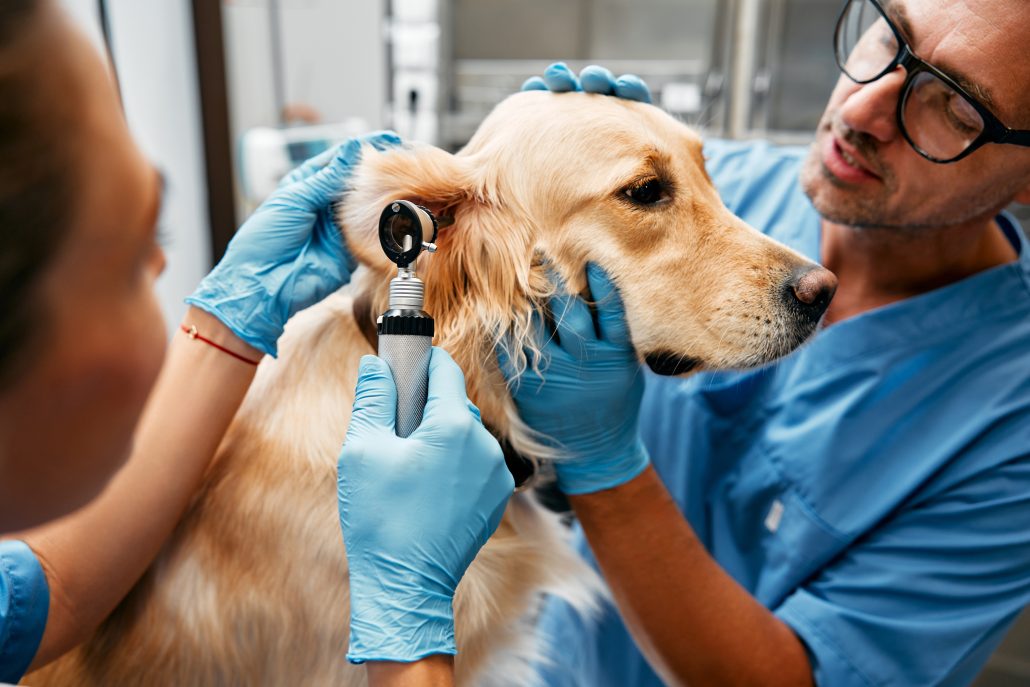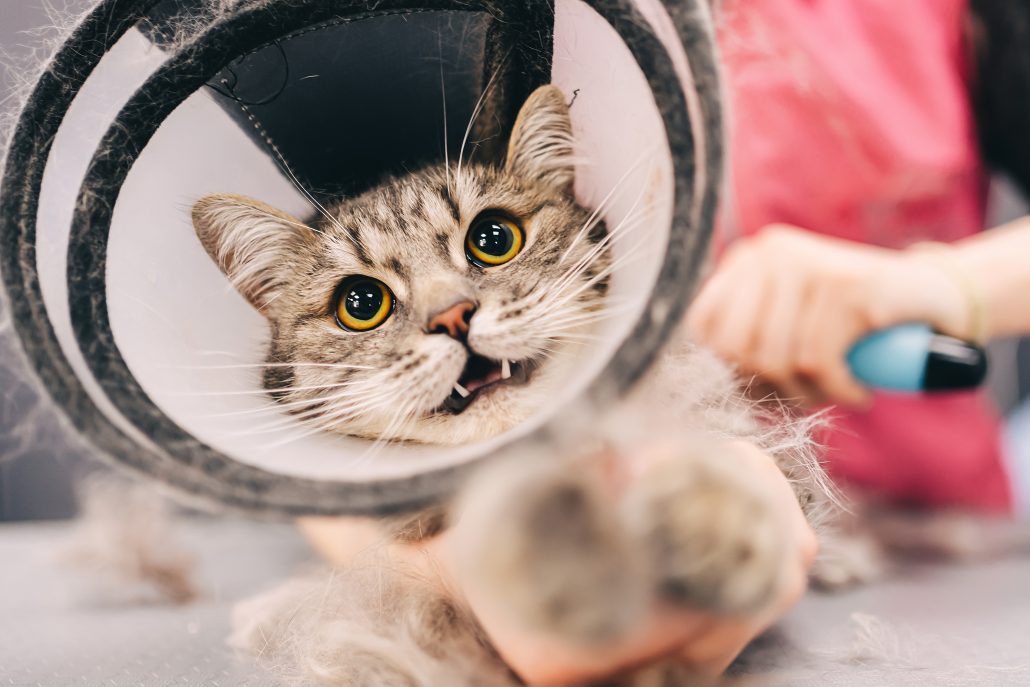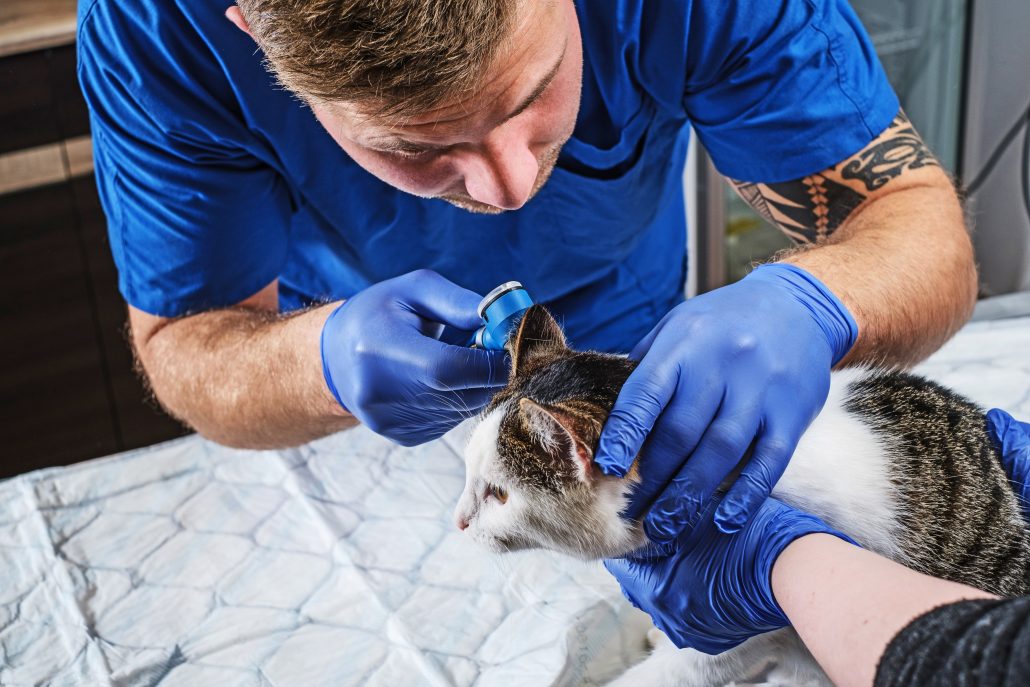
If you’ve ever noticed your furry friend scratching their ears a bit too often or shaking their head vigorously, you might be dealing with a common pet concern: ear infections. Just like us, our beloved pets can experience discomfort in their ears, but understanding the causes, symptoms, and treatments can make a world of difference in their health and happiness.
Whether you’ve got a curious cat or a playful pup, their ear health plays a crucial role in their overall well-being. In this post, we’ll cover everything you need to know about ear infections. From what causes them to treatments and prevention, we’ve got all the details covered.
What Is A Ear Infection?
In simple terms, an ear infection, scientifically known as otitis, refers to inflammation and infection affecting the ear canal and sometimes deeper parts of the ear in our pets. It can cause discomfort, irritation, and potentially serious complications if not properly treated.
There are 3 common types of ear infections and is most often caused by allergies and skin conditions, moisture, foreign objects, injury to the ear canal, polyps or masses and an excess of bacteria or yeast.
- Otitis Externa: This is the most common infection we see, causing inflammation in the outer ear canal’s lining. It’s often triggered by moisture, allergies, or ear mites.
- Otitis Media and Interna: These are the deeper, more serious infections of the middle and inner ear. They are most often triggered by an untreated otitis externa or other underlying issues. Watch out for signs like imbalance, head tilting, or changes in hearing.
Remember, catching and treating these ear infections early can save your pet from more serious complications down the road.
Signs & Symptoms Of Ear Infections
Are you wondering if your pet has an ear infection? While some pets may show no signs aside from some wax buildup or discharge, ear infections can be especially painful for pets. Spotting them early can make all the difference. Here are some of the most common signs and symptoms of an ear infection in your pet.
- Headshaking
- Redness or swelling
- Odor
- Excessive scratching of one or both ears
- Increased discharge/wax
- Darkened discharge
- Scaly, crusty, or scabby skin in ears
- Avoiding head petting
Read More: Hearing Loss In Dogs: Is My Dog Losing Their Hearing?

Diagnosing Pet Ear Infections
If your furry friend’s ears are showing any of those telltale signs, it’s time to take your pet to the vet. Not only does this prevent discomfort and pain for your pet, but nips these infections in the bud before they spread to the inner ear. These infections typically require precise diagnosis, so it’s best not to treat these at home without the advice and guidance of your vet.
What to Expect at the Vet’s Office
When you take your pet for their checkup, your vet will ask you a number of questions to get a full picture of your pet’s health and lifestyle. This will give them better insight into what may be causing the discomfort. They may ask things such as:
- Symptom Duration: How long has your pet been showing signs?
- Allergies and Health History: Any known allergies or other medical conditions?
- Medication History: What meds have they taken recently or in the past?
- Diet Details: What’s on the menu for your pet?
- Ear Cleaning Routine: How often do you clean their ears, and what products do you use?
- Grooming Habits: Have you recently trimmed or plucked any ear hair?
- Recent Activities: Any baths, grooming sessions, or swimming activities?
- Past Ear Troubles: If your pet has a history of ear infections, when did they occur and how were they treated?
Once this is done, they will physically examine your companion.
- Visual Assessment: They will check for redness, swelling, or suspicious discharges.
- Otoscope Examination: They will look deep into the ear canal to spot any issues such as wax buildup, growths or foreign objects.
- Ear Palpation: They will feel around to gauge your pet’s comfort levels and infection severity.
- Microscopic Examination: They may take swabs to analyse under the microscope.
- Further Tests: In more serious or complex cases, biopsies or X-rays might be recommended.
Read More: How Often Should Your Cat Have a Checkup

Treating Ear Infections
Depending on how serious your furry friend’s ear issue is, your vet will prescribe a personalised treatment plan. They may start with a gentle ear cleanse using medicated solutions to clear out any gunk and buildup. For more stubborn infections, your vet might prescribe special ear drops and in severe cases, oral antibiotics and anti-inflammatories.
With the right care and treatment, most ear infections will clear up within one to two weeks. However, deeper more severe infections can take up to a few months to fully resolve. In some rare cases, your vet may recommend surgery to remove any damaged tissue.
Remember, it is crucial to stick to your vet’s recommendations. Always, always complete the full course of medication. Even if your pet seems better, the final doses are essential to ensuring the infection doesn’t come back.
Can You Prevent Ear Infections?
Like most illnesses, prevention is always better than cure. Fortunately, there are a number of proactive steps you can take to ensure your pet is less likely to get an infection. These include:
- Thoroughly dry your pet’s ears after baths and swimming. Check with your vet if ear powder would be a good option to keep their ears dry.
- Cleaning your pet’s ears are another effective method for preventing infection, as dirt and wax buildup are some of the most common causes. However, it is essential to be gentle as rough or too deep cleaning can damage the ear and cause an infection anyway! Using a pet safe ear cleaning solution and gently massaging the ear from the outside is an effective methos. Dry with an absorbent gauze (cotton or paper towels can leave fibres behind)
- Be sure to clean the outside of the ear flaps too!
- If you’re unsure about cleaning their ears yourself, your vet can help. They’ll guide you on the best techniques and recommend suitable products to keep their ears squeaky clean and infection-free.
*This post is intended solely as general guidance. It does not replace health or other professional advice. Be sure to contact your vet for appropriate treatment.

Ear’s To Happy Healthy Pets!
From spotting sneaky symptoms to getting the right treatment, you’re now armed with the know-how to keep your pet’s ears perked up and trouble-free. Remember, early detection and regular vet check-ups are key to catching any ear issues before they become a bigger problem.
So, let’s make sure those ears stay happy and healthy. At The House Call Vet, we’re here to provide compassionate care right at your doorstep. Schedule a visit today and keep those ear infections at bay!

